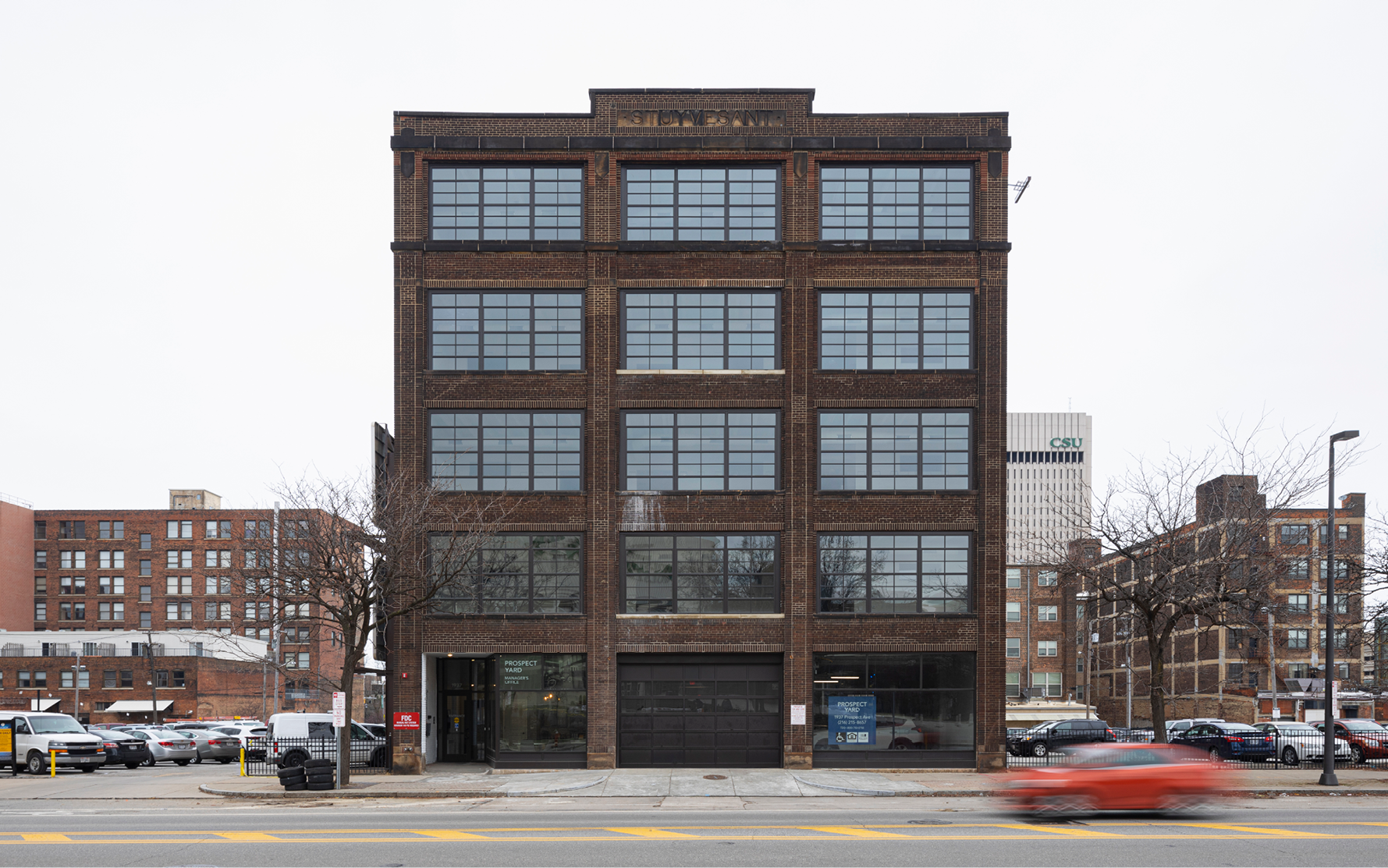Prospect Yard: Paying Homage to Cleveland’s Automotive History
May 23, 2019 // Project Updates, Historic

Once upon a time, Cleveland was known as the epicenter of the automotive industry. By the early 20th century, Cleveland was home to seven major car manufacturers and added many industry innovations, including the spark ignition, flexible steering column, and various engine types. This formative period in Cleveland’s automotive manufacturing heyday was also when Frank E. Stuyvesant established the Stuyvesant Motor Co. and later became the primary Cleveland distributor for the merged Hudson-Stuyvesant Motor Car Company. Such an enterprise required a facility that could sell and service these high-end vehicles, which is where our story begins.
Located on Prospect Avenue within Downtown Cleveland’s current “Campus District” stands the historic former Stuyvesant Motor Company building. Constructed in 1917, the building was originally built as a sales showroom, service center, garage, and storage facility for the manufacturer’s cars. Prior to the eventual dominance of the “big three” (Ford, Chrysler, General Motors), the Stuyvesant Motor Co. embodies the shift from small, local automotive manufacturer to the larger assembly-line based corporations whose legacy remains in today’s brands. Within a local framework, the building significantly contributed to the manufacturing, service, and support of automobiles, and represents the rise and decline of small, independent auto manufacturers in Cleveland. Expansion of the four-story building to its existing five stories in 1919 underscores the significance of this company as other local manufacturers failed.
After the Great Depression, the Stuyvesant Motor Company Building became home to various other businesses associated with the automobile industry and service functions until the late 1930s. The building was then occupied by the Coast Guard, the U.S. Government and even a print shop until it sat vacant for decades.

Today, the historic property is undergoing a substantial rehabilitation to begin its new life as Prospect Yard, scheduled to be completed early this summer. The adaptive reuse project started out as a conversion to “market rate” housing. The developer recognized that many Cleveland residents were being displaced by the volumes of new work downtown and lack of affordable housing options in the area. The project then became “income eligible” housing to offer affordable options to those in the service industries who are essential to the life of Cleveland’s retail, hospitality, and even health care industries.
The open, industrial layout of the Stuyvesant Motor Co. building lends itself well to its rebirth as housing. It also serves as a prime example of how historic preservation and adaptive reuse can address the housing affordability crisis occurring in cities nationwide. Additionally, the original and restored features of the building give the apartments a high-end, industrial loft feel not often accessible to residents in modern affordable housing developments.
Among the restored features are the original car lift elevator, covered underground parking once used for car storage, exposed interior concrete columns, and joist and slab ceilings. Throughout the building, original exterior masonry materials, including window sills, brick pilasters, and stone ornament remain intact.

Arguably, the most striking feature of the entire project is the giant steel sash windows framing views of the Cleveland skyline and flooding the apartments with natural light.
The original features and structure of Prospect Yard make it a unique property steeped in local history. In its new role, The Stuyvesant Motor Company building retains the rich history and memorable characteristics of Cleveland’s automobile industry.
Stay tuned for more details and updates on the completion of Prospect Yard. In the meantime, check out our other historic preservation work.